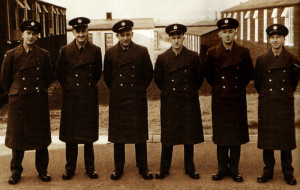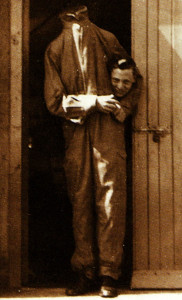
MOST National Servicemen will have been involved in those wonderful exercises to defend camp or airfield from an attacking force. They were always set up after a normal day’s work, and it was always cold and dark.
On this occasion it was not only dark but foggy. Denims (a sort of overall) were worn for exercises over the top of one’s uniform, giving protection and extra warmth, and they had a large number of pockets. Emergency rations, usually a thick slice of corned beef between a couple of doorsteps of bread, and an apple, could be accommodated in the breast pockets.
Close encounter
My classmates were split up to defend different areas. Two were assigned to positions on the hills around the camp. Amid the confusion that surrounds these events they ended up challenging each other: “Halt! Who goes there?”
Because of the murky conditions they didn’t recognise each other, so an ‘exchange of fire’ took place. A .303 blank round incorporates felt wadding, and at very short range, this is capable of killing. One of my classmates was missed but the other was unfortunate to receive a heavy blow in the area of his ration pack.
On inspection the apple was found to be split and something had passed through the first
sandwich. The front side of the remaining sandwich had been punctured, and the wadding was embedded in the corned beef filling. The RAF cared for us: not only were we provided with something if we were peckish, but it doubled as effective body armour.
What a blast!

I had been assigned to be a runner in the camp, conveying messages between the various headquarters. I had returned to my base in a hut, found myself a dark corner and adopted a low profile, and was congratulating myself on not being up on the hills in the dreadful weather. Perhaps in another couple of hours it would all be over and we could get to bed.
Suddenly there was a deafening detonation on the outside of the wall I was leaning against, and a maniac burst in, handing out chits to everyone in the hut. He was an exercise umpire and our hut had been ‘hit by a bomb’. The chits told us whether we were dead or wounded, and if wounded, what the nature of our wounds was. Apparently, I had been badly sliced up by the bomb and was a stretcher case.
With the agreement of the umpire it was decided that as we had been bombed and there were wounded, we ought to send for rescue services and ambulances. Telephones and other means of communication had been destroyed by the bomb, so they needed to send a runner. Not one could be found, but somebody remembered I had been a runner during the evening.
I showed my chit proving that I was suffering from life threatening injuries and incapable of any running. To my disgust the umpire snatched back my chit and sent me for the emergency services.
Holding fire
The amount of firing that took place on an exercise was directly related to who issued the rifles. If issued from the armoury and returned to them
at the end of the exercise, firing of rifles or Bren guns at the ‘enemy’ or shadows could be quite intense. Any spare ammunition would be expended in joyful volleys: the armourers would clean them.
An exercise using one’s own rifle was a different matter; it was fired only as a last resort. Shortly after the exercise there would be a parade requiring one’s rifle to be inspected.
“You horrible little man. What has crawled up your rifle barrel?”
On another exercise I was as number two on a roadside Bren gun. It was pitch dark.
Someone was walking down the road towards our position and had ignored two challenges further up the road. Cheeky beggar, I thought, I shall have to do something about this.
As he had ignored two challenges perhaps I was entitled to blaze away at him, but then I remembered that if I fired my rifle I’d have to clean it.
I very audibly operated the rifle bolt to put a round into the breach, and then followed with a challenge. The sound of a round going up the spout immediately halted him and we got into the conventional challenge routine.
“Halt, who goes there? Friend or foe?”
“Friend.”
“Advance and be recognised, friend.”
This was followed by a satisfactory exchange of passwords and my rifle remained unsoiled and ready for another day.
Mike Gillings, Brighton, East Sussex








